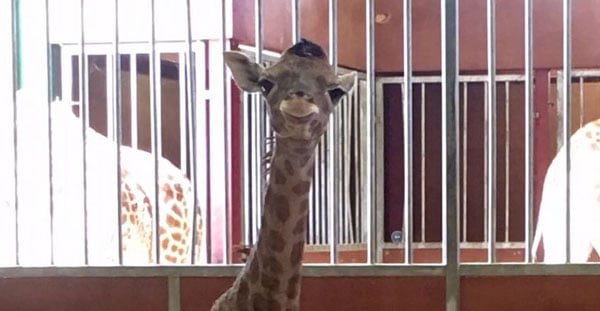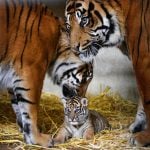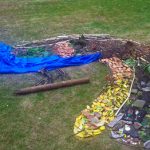Baby boom reaches new heights

First came Valentine the Lorikeet chick followed by Penguin chicks, Baboon infants, Kangaroo Joeys, a Red Panda cub and a quartet of Oryx calves, but when last month we celebrated the birth of an adorable zebra foal, it was always going to be a tall order to top. However, Flamingo Land now has a new arrival that is stealing the show within the cuteness stakes – A gorgeous Giraffe calf born to mum Lizzie and dad George.
When keepers arrived to work on the morning of Saturday 21st July, they were delighted to find the new born calf looking healthy and strong. This is in fact Lizzie’s fourth calf to date and a great new edition to the herd.
Giraffes are the tallest animals on the planet and have evolved their unique physiology to take advantage of feeding on the fresh leaves, flowers and bark at the very tops of trees. Despite having incredibly long necks, they still only have seven cervical vertebrae or neck bones, exactly the same number as us. A giraffe tongue can reach around 45cm (18inch) long, which is prehensile allowing them to reach in and grasp leaves between the long thorns of the acacia trees on which they regularly feed. These are bluish black in colour and covered in thick saliva to prevent sun burn and drying out. They have excellent eyesight, and along with their unique vantage point, they are able to spot danger from a huge distance. Lions are the only real predator to threaten an adult giraffe and even then, they rarely tackle them as one kick could shatter a lion’s skull.
However, Giraffe numbers are falling and they have seen a 40% reduction in numbers over the past 30 years. This is thought to be down to habitat loss, drought brought on by global warming and hunting for their meat, skins and tail hairs that are used to make fly swishes and jewellery. They are now classified as vulnerable to extinction, with some sub-species listed as endangered. George and Lizzie are part of a European wide breeding programme and the birth of their calf marks a notable success in the conservation of this wonderful species.


